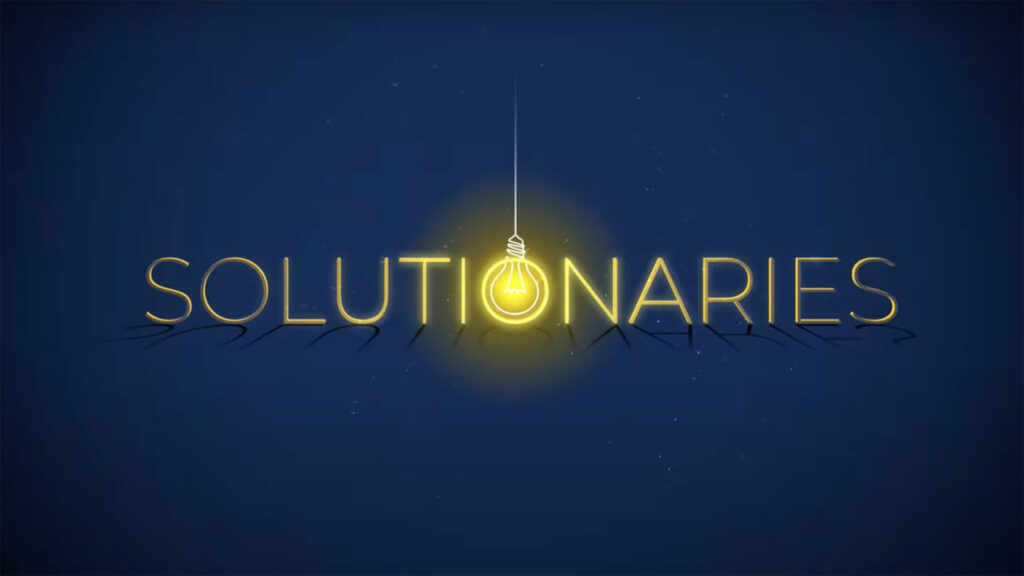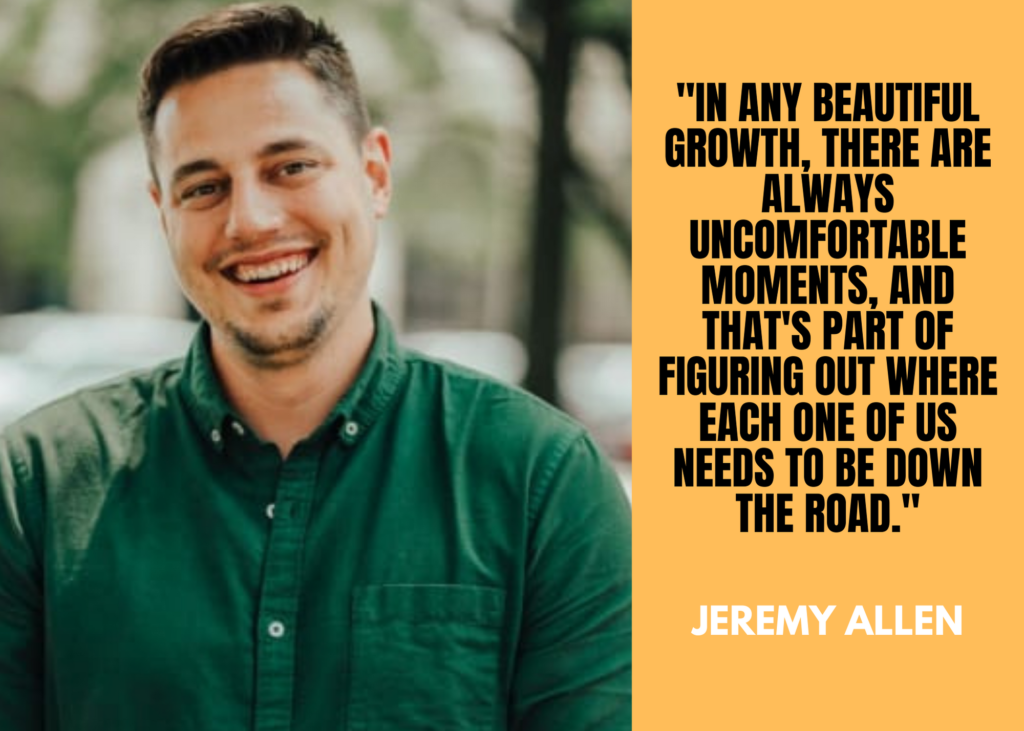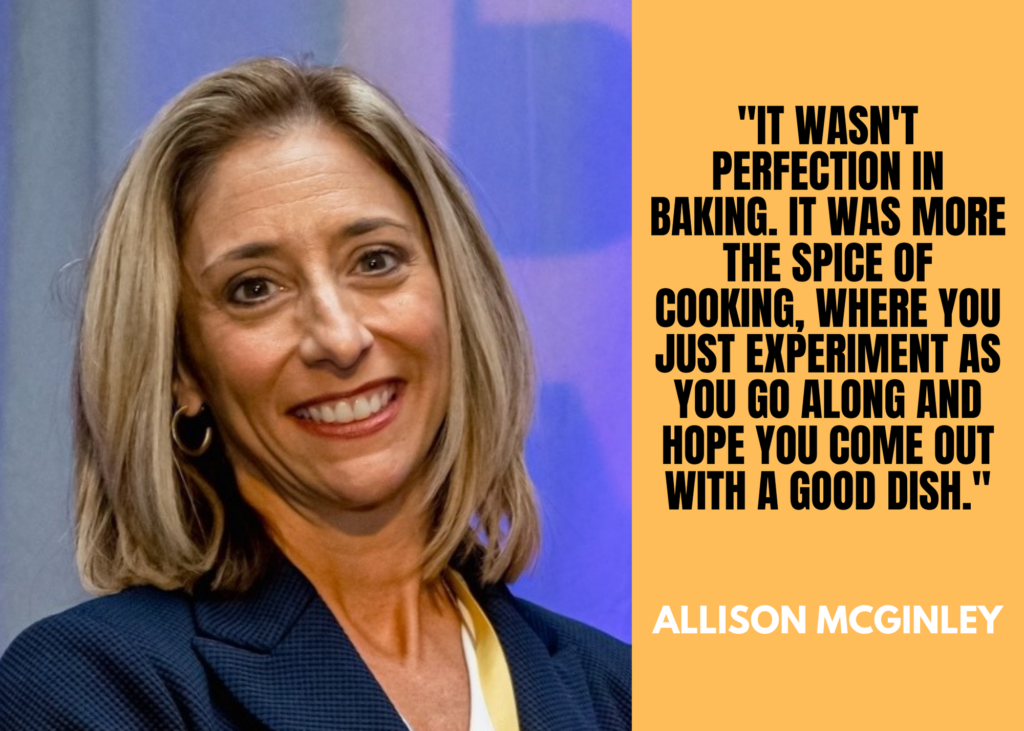
“The one conversation I do remember us having is ‘Do we really like that? Is that a word?’” Allison McGinley, news director at Graham Media Group’s WKMG in Orlando, doesn’t remember who came up with the name “Solutionaries” for the station’s experimental new digital project last spring, but the title stuck. And it turns out solutionary is, in fact, a word. Here’s how the station defines it on its website:
A Solutionary is someone who recognizes a problem or injustice in society and comes up with creative and innovative ways to tackle those inequities, thus making the world a better place, one step at a time.
It turns out that the “one step at a time” approach also describes how McGinley and her team tackled the project itself, which is a model of collaborative innovation. Maybe we should come up with a new word for it — let’s say “Televisionary” — and a definition, of course:
A Televisionary is someone who recognizes an editorial challenge and comes up with creative and innovative ways to tackle that issue, thus making local TV news better, one story at a time.
The original idea for Solutionaries was to create what Graham Media describes as a “digital newscast” focused on people who are “making a difference” by implementing solutions to critical social issues. The proposal came from the Graham digital team, which incubated it at Table Stakes, the challenge-based innovation program at the Cronkite School that’s supported by the same Knight Foundation grant that funds our work here at the News Lab.
Ideas that come from elsewhere don’t always find fertile ground in newsrooms; chances are you’ve experienced the “not invented here” syndrome from one side or the other (or both) yourself. But WKMG was already doing a lot of solutions-based reporting. “Was there eye-rolling for me? Not at all,” McGinley says. “It was like, ‘Cool, this is something else we get to go play with.’” Besides, the parent company is known for not imposing its will on its stations. “That is kind of an expectation of Graham,” McGinley says. “As individual television stations, we are allowed to operate as a reflection of our local communities.”
WATCH Episode 1 of Solutionaries on policing
In that spirit, the WKMG team decided to focus on two issues important to Orlando: improving relations between the community and the police, and enhancing access to affordable housing. The plan, tailored to today’s consumption habits, was to create multiple stories for the station’s digital platforms and allow users to watch as little or as much as they liked. “The idea was to take this nugget of an idea or something that was looking for a solution, and then spiderweb it out. So that you could have a piece of the story that you could watch alone, or you could watch it in conjunction with the other media we created associated with it,” McGinley says.
So if you search for Solutionaries on YouTube, you can consume the collection of policing stories as 10 individual segments — a “Reporter’s Notebook” from anchor-reporter Erik von Ancken, for example — or stitched into an hour-long “episode,” with investigative reporter Louis Bolden providing the connective tissue. For housing, the team switched up the formula, producing a number of standalone stories in advance of a 33-minute episode built around three segments reported by Bolden and his colleague Nadeen Yanes.
WATCH Episode 2 of Solutionaries, on affordable housing
The two longer episodes eventually appeared on the broadcast channel, but it wouldn’t have mattered if they hadn’t: digital first could have turned out to be digital only. “The idea isn’t to create an hour-long special or half-hour-long special,” says Jeremy Allen, the Michigan-based special content producer from Graham’s digital team who helped shape the project. “It’s really letting the material that we have dictate the best way to use it. And so we find that [if] we make really good pieces, and we provide them on our channels, we can probably still take those and make them into a cohesive episode or a show. And so far, we’re two for two.”
WATCH a ‘Reporter’s Notebook’ from Episode 1 of Solutionaries
McGinley started with a core group of five people, mostly from her investigative unit, but the team grew to about a dozen as the project evolved. She and Allen encouraged the WKMG journalists to stretch beyond their usual reporting and producing style, but they made the interesting and important choice not to push too hard. Solutionaries blends experimentation with tradition. Remember: step by step.
“What’s really scary is to tell a bunch of journalists, ‘You have no rules,’” McGinley says. “And ‘This isn’t a newscast.’ And then they go ‘Well, we don’t know what to do with that.’ That’s where Jeremy has come in and really helped to inspire us to think more about how we consume information in our own personal lives. And then to take some of those tactics or techniques and inject them into our storytelling.”

“People want to see stories told where it’s like somebody just sat down in front of their computer and is talking to you or me and just telling a story. And it’s almost like taking the presentation out of the presentation,” Allen says. “We’re doing a lot of the same things that have been done in the past, but doing it in a way that feels like you’re having a conversation with a friend, or you’re going to explain something rather than put together a really highly produced package and explain something in a way that seems almost artificial in some ways.”
But as eager as he is to appeal to the next generation of news consumers, Allen understands the difficulty of breaking away from TV news formulas. “I worked in a newsroom for 21 years too,” Allen says. “So I know that you can’t just say, ‘Hey, you guys are so great at all this: stop it, and then let’s just do something completely different.’ In any beautiful growth, there are always uncomfortable moments, and that’s part of figuring out where each one of us needs to be down the road.”
WATCH a standalone affordable housing story from reporter Nadeen Yanes
McGinley says the team embraced the chance to do something new. “I think you have to get traditional journalists comfortable with the idea of pushing the boundaries. So from an elastic band perspective, you know, they stretch it a little bit, they go, ‘Okay, that was a little different. And I still felt like I gave the viewer, the user, the audience what they needed to know,’” she says. “At times where there was debate or there was pushback, at the end of it they have all walked away so excited, so energized and so proud of what they’ve done that the idea that they got pushed out of their comfort zone a little bit is so far in their rearview mirror it’s not even a thing.”
Coming in 2022, not just Solutionaries, Episode 3 — topic not yet public — but a broader collaboration across the group, with other Graham stations contributing to the project. Graham has engaged the Solutions Journalism Network, whose principles influenced the initial concept, to train the company’s journalists in its methodology for rigorous reporting on potential solutions to social problems. “Good storytelling is good storytelling, regardless of what the packaged content looks like,” McGinley says. “And that’s the most important part of this: We’re trying to encourage more solutions-oriented journalism that we know impacts the viewer and the user in a better way.”

So don’t expect the next stage of the project to look exactly like what’s come before. That’s the whole point, and it’s equally relevant for the “televisionaries” in your newsroom: embrace the flexibility of digital formats, study the metrics, listen to audience feedback, and keep evolving to make the next version better.
“We’re going to look at Episode 1 and 2 and go ‘Okay, what did we like? What really worked?’ And then ‘How can we make this just a little bit different?’” McGinley says. “Not like a hard left turn, but how can we continue to evolve it? I think we won’t fully realize success from an analytics standpoint until we’re half a dozen episodes down the road. Because we’re continuing to try to iterate and evolve, and I don’t think we want to cookie-cutter it. It wasn’t perfection in baking. It was more the spice of cooking, where you just experiment as you go along and hope you come out with a good dish.”
Get the Lab Report: The most important stories delivered to your inbox